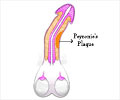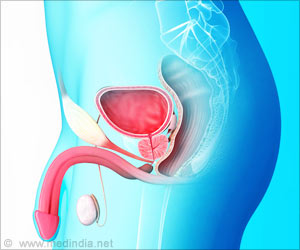Erectile dysfunction in men with spinal cord injuries can be relieved by tadalafil a drug that appears to improve the condition according to an online article posted today that will appear in the November 2007 print issue of Archives of Neurology, one of the JAMA/Archives journals.
Between 10.4 and 83 individuals per million worldwide experience spinal cord injuries every year, according to background information in the article. “Throughout the world, spinal cord injury occurs most often in young men, resulting in negative physical, social and psychological consequences,” the authors write.“Erectile dysfunction, defined as the inability to attain and maintain penile erection sufficient for satisfactory sexual performance, is a common complication in men with spinal cord injury.” Only 25 percent of men with spinal cord injuries are able to have erections that are adequate for having intercourse.
Francois Giuliano, M.D., Ph.D., of the Raymond Poincare Hospital, Garches, France, and colleagues, conducted a randomized, double-blind study of tadalafil in 197 men with spinal cord injuries (average age 38). After a four-week period during which none of the men received treatment, 142 were randomly assigned to the tadalafil treatment group and 44 to the placebo group.
During the 12-week treatment phase, the participants were instructed to take the medication as needed before the potential for sexual activity, with a maximum of one dose daily. Those assigned to take tadalafil were given a 10-milligram dose at first and were evaluated every four weeks, at which time patients were switched to a 20-milligram dose based on their response to the treatment.
At the beginning of the study, the men’s average score on the International Index of Erectile Function—a 15-item questionnaire on which a score of 25 or lower indicates erectile dysfunction—was 13.4. After 12 weeks of treatment, men taking tadalafil had an average score of 22.6 (indicating mild erectile dysfunction) and men taking placebo had an average score of 13.6 (indicating moderate erectile dysfunction).
Men taking tadalafil were, on average, successful 75.4 percent of the times they attempted penetration and 47.6 percent of the times they attempted intercourse, compared with a 41.1 success rate for penetration and 16.8 percent for intercourse among men taking placebo.
“Tadalafil was safe and well tolerated with few treatment-emergent side effects,” the authors write. Fifty (35 percent) of patients in the tadalafil group and 15 (34 percent) of those in the placebo group experienced at least one adverse effect. Among those taking tadalafil, the most common side effects were headache (8.5 percent of patients) and urinary tract infection (7.7 percent of patients).
“As in other erectile dysfunction studies that include patients who were difficult to treat owing to pre-existing conditions (e.g., prostatectomy, diabetes mellitus), tadalafil was efficacious for the treatment of erectile dysfunction after a traumatic spinal cord injury,” the authors write.
“On-demand treatment with tadalafil (10 milligrams or 20 milligrams) may help improve the sex lives of patients with erectile dysfunction and spinal cord injury and their partners.”
Source-Eurekalert
LIN /J











